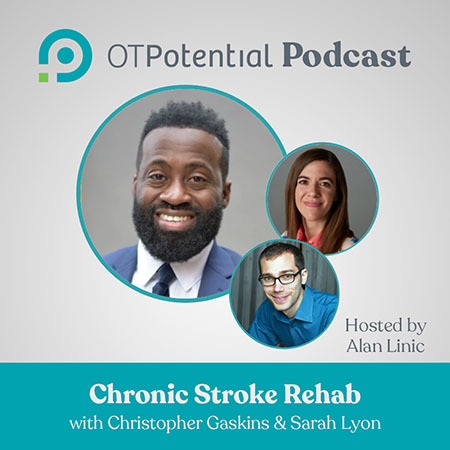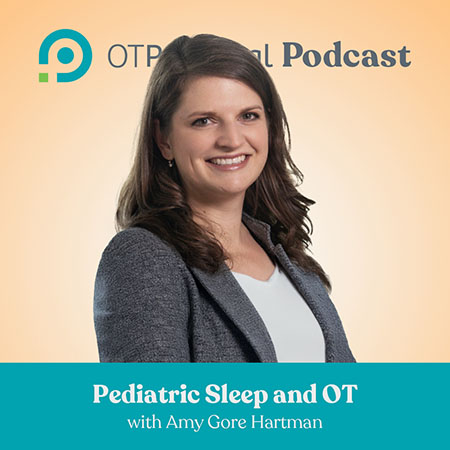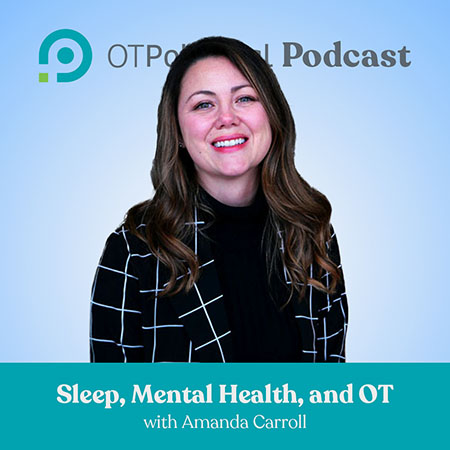Earn 1 hour of continuing education by joining OT Potential after taking this course.
If you have not been paying attention to recent statistics on drowning, you need to be.
After decades of decline, deaths by drowning are on the rise.
Groups already at higher risk have seen the greatest increases in drowning deaths. This includes adults ages 65 years and older of all races and ethnicities, as well as Black people of all ages.
But today, we’ll focus on an especially high-risk group: children (and particularly, children with autism). Drowning is the leading cause of death for children ages 1 to 4, and children with autism spectrum disorder are 160 times more likely to experience nonfatal and fatal drowning than their typically developing peers.
Whatever setting you work in, I hope these sobering numbers convince you to pay close attention to water safety. Here, we’ll look at an aquatic OT swim safety program that you could consider implementing in your community.
Next week on the OT Potential Podcast, we will welcome the article’s lead author, Erika Kemp, for a discussion on the logistics of launching a swim safety program. We’ll also tackle big picture questions—like how to go about mobilizing the entire OT community to prevent drownings in our communities.
Primary Journal Article Explored
When you log in, be sure to check out the OT Potential Club’s written breakdown of the following research article. Then, share your questions and thoughts with fellow practitioners.
Supplementary Materials
Swim Safety Materials
- OT Potential Club Handout: Swim Safety for Autistic Children Fact Sheet
- AAP Drowning Prevention and Water Safety
- NAA Big Red Safety Box
- National Drowning Prevention Alliance
- Red Cross Water Safety
- Study: Individuals with Autism at Substantially Heightened Risk for Injury Death Columbia University Mailman School of Public Health, 2017
Additional Research Articles
Learning Objectives
- You will be able to identify assessments you can utilize in aquatic OT for autistic children.
- You will be able to recognize group interventions that can be utilized in aquatic OT for autistic children.
Agenda
Intro and breakdown of journal article
- 00:00:00 Intro
- 00:03:00 Swim Safety and Autism Intro
- 00:03:52 The Role of OT in Swim Instruction
- 00:04:27 What was the intent of this paper?
- 00:04:53 What were their methods?
- 00:07:21 What were their results
- 00:08:17 Article discussion and conclusion
Discussion on practical implications for OTs
- 00:09:45 Intro to Erika Kemp
- 00:11:49 How Erika became interested in swim safety
- 00:16:35 How the OT swim program came to be
- 00:22:32 Article impressions
- 00:26:07 How can we educate about water safety without fear mongering?
- 00:31:01 How is a good fit for this program?
- 00:34:30 What steps would I need to take to start an OT swim program?
- 00:40:28 How could this fit in the outpatient setting or a non-profit?
- 00:48:05 How to promote swim safety for children under 4?
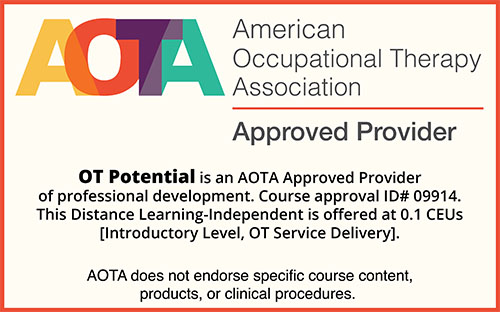
Instructional Methods/Registration/Special Needs Requests/Cancellation Policy
This course is an independent/self-study course delivered via podcast on iTunes, Spotify, Google Play & more.
If you need accommodations to take this course, please contact us and we will address your needs on an individual basis.
If we cancel a promoted course, event, live stream, or any other paid CEU offering prior to release, and you subscribe explicitly for said offering, you are eligible for a full refund if you did not complete and earn any other CEU quizzes or certificates during your subscription.
If a live webinar is cancelled that you signed up for, our system will automatically generate an email to you and if possible, we will inform you of the rescheduled date. Our most current webinar schedule will be found at: otpotential.com/live-ot-ceu-webinars.
Course Completion Requirements
In order to receive a certificate for this course, you must first participate in the podcast/webinar in its entirety. Then, you will need to take the quiz that will accompany the course and earn 75% or higher. If you pass, a certificate will be automatically generated and sent to your email. Quizzes for live (distance learning–interactive) webinars must be completed within 3 days of completing the webinar.
Target Audience/Educational Level
Our target audience is occupational therapy practitioners who are looking to learn about Swim Safety in Autistic Children. The educational level is introductory.
Financial and Non-financial Disclosures
It is the policy of OT Potential to disclose any financial and non-financial interest the provider or instructor may have in a product or service mentioned during an activity. This is to ensure that the audience is made aware of any bias of the speaker.
We here at OT Potential have no financial stake in this topic. Our guest, Erika Kemp also has no financial disclosures.
Speakers
Erika Kemp OTD, OTR/L, BCP, FAOTA

Erika Kemp is a board certified pediatric occupational therapist with aquatics. She has a bachelor’s degree in occupational therapy from Ohio State, a post-professional master’s from Boston University and post-professional doctorate from Indiana University.
Erika worked in school, community and medical pediatric settings before moving into academia. She has worked in both OTA and OT academic programs as a fieldwork coordinator, capstone coordinator and now serves as the interim program director of the OTD program at The Ohio State University.
Her primary professional area of interest is supporting students and educators in the use of evidence-based practice as well as innovative ways to push occupational therapy into the community. She has an active line of research looking at how aquatic therapy increases participation in daily life and prevents drowning for children with disabilities.
Sarah Lyon, OTR/L

Sarah’s passion is helping fellow OT practitioners translate evidence into daily practice. Sarah earned her BA in religion from St. Olaf College, then earned her master’s degree in occupational therapy from New York University in 2011.
Since then, she’s worked in numerous facilities, including a critical access hospital, an acute trauma hospital, and a state inpatient psychiatric hospital. Sarah is the founder/owner of OT Potential. Read more about OT Potential here.
This course was designed to meet your continuing education requirements
We designed the courses in the Club to meet the requirements for “online” and “independent/self-study” courses. To verify the requirements from your specific state (within the US), check out our post, OT Continuing Education Requirements. If you are outside of the United States and have questions, please contact us.
We are proud to be an AOTA Approved Provider and to meet the requirements for your NBCOT renewal.
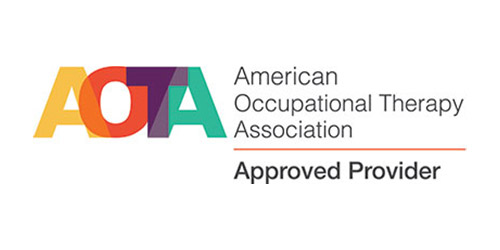


See our other OT courses!
Swim Safety in Autistic Children • OT Potential
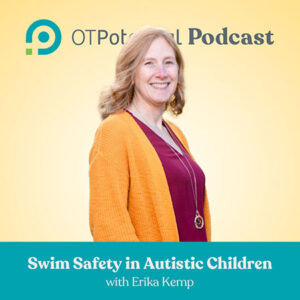
Today we'll be covering Swim Safety in Autistic Children. We'll look at new research and discuss it with Erika Kemp OTD, OTR/L, BCP, FAOTA.
Course Provider: Organization
Course Provider Name: OT Potential
Course Provider URL: https://otpotential.com/
Course Mode: Online
Start Date: 2024-07-11
Duration: 01:00:00
Repeat Count: 5
Repeat Frequency: Yearly
Course Type: Subscription
5




